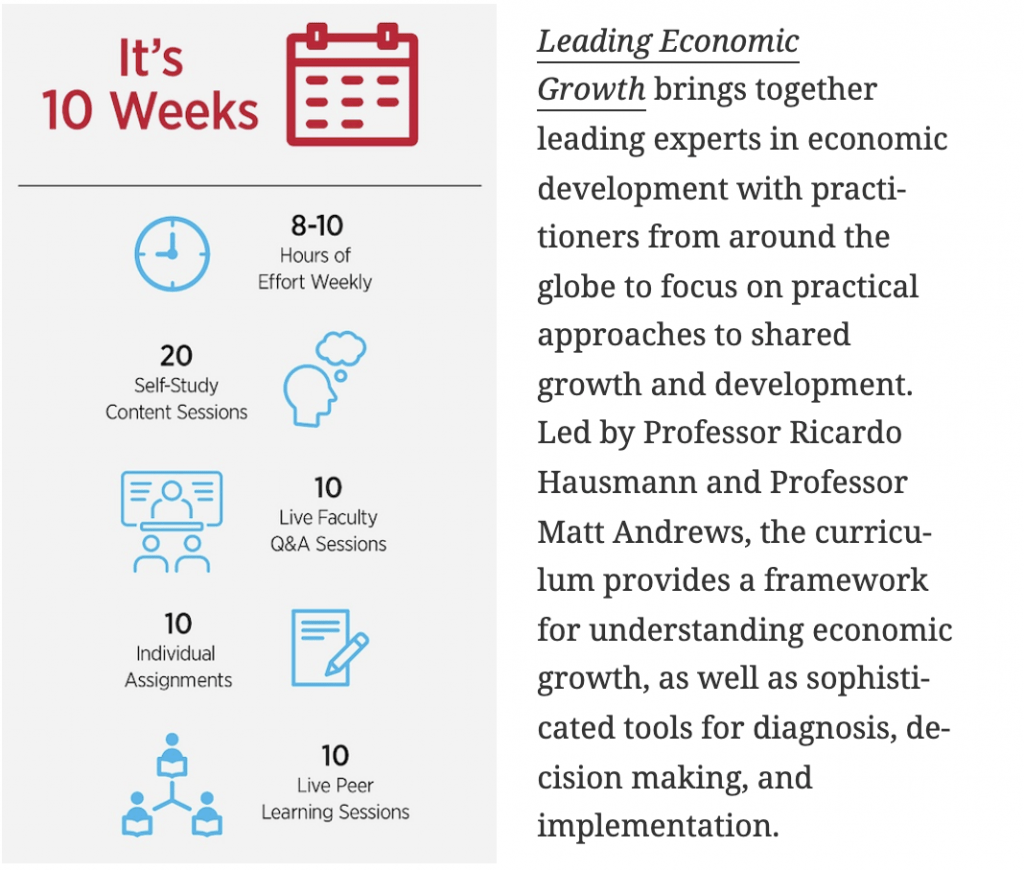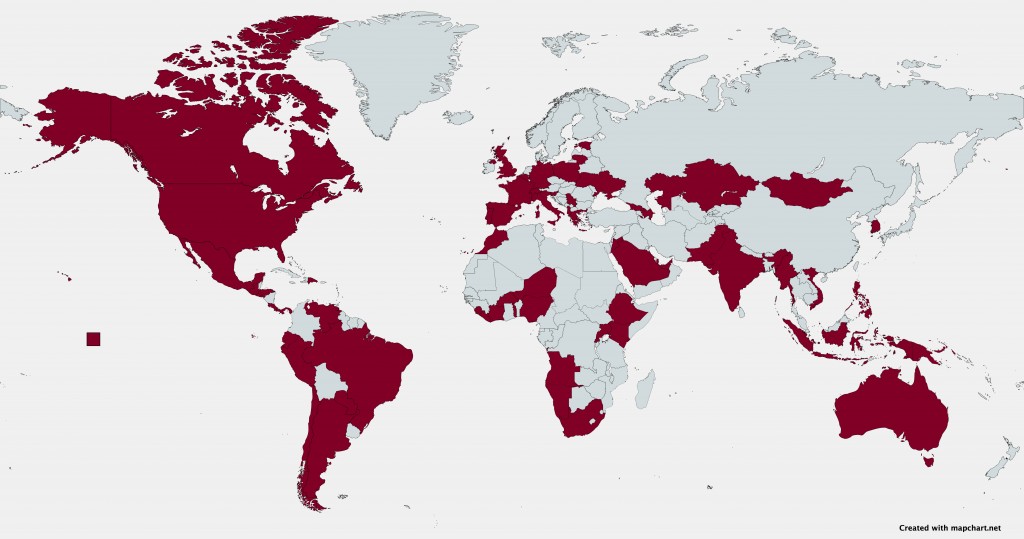We are offering Leading Economic Growth online again from October 3 – December 9th 2022. Application deadline is September 12th, 2022.
Stimulating growth is the top economic priority for many countries and localities around the world. Yet many are trapped, lacking the productive capability to solve problems and expand to new industries to drive development. New growth strategies need paths, processes and organizations to address this problem.
Sophisticated Tools. Practical Approaches.

In this ten-week program, you will learn how to develop a set of policies and tools to define your growth problem, detect constraints to growth, and design solutions to unlock growth. Through peer learning groups and live class sessions, you will apply the frameworks and tools to your own economic growth challenge.
We’ve transformed our cutting-edge research and frameworks into easily digestible formats for anyone struggling with the question of growth. You could be working in the private or nonprofit sectors, in government, or for a multilateral organization, focused on a country, region, or city. If you’re saying we need to grow more, we need to grow in different ways, in different locations, for the benefit of different peoples—this course is for you.
We use a three-part model: you learn the concept, practice by applying the concepts, then reflect on the application to your context. We designed the course to include two asynchronous content sessions and one live question and answer session with the faculty each week. Participants are required to identify an economic growth challenge in their city, region or country, that they would use to apply the concepts, frameworks, and tools they learned each week. Participants also attend a weekly peer learning group session where they could engage with each other and deepen their understanding. Review the draft program schedule.
The program’s curriculum includes:
- Breakthrough research insights on the nature of economic growth: learning what makes growth low, stuck, volatile, not sustainable, or not inclusive.
- Ways to identify the constraints faced in expanding economic growth: finding what prevents a place from expanding and diversifying their productive capabilities to enter new economic activities to achieve more rapid, sustained growth.
- A new way to think about economic strategy-making to construct (and deconstruct) the problem: moving away from one-size-fits-all solutions to identify and address the context-specific binding constraint to growth.
- Adaptive policy implementation: exploring the institutional processes agents, and teams required to build capacity and mobilize the coalition to effectively implement growth projects and reforms.
We have offered this program three times since March 2020, when we pivoted online. 343 participants from 76 countries have successfully completed this program. 96% of the participants rated the program excellent/very good, and 98% of them said that they would consider taking an online course with us again.

Here’s what they had to say about the program:
“This is an extremely engaging, interesting and practical course. I have already incorporated many of the ideas/concepts into my project proposals.”
“It was one of the most stimulating learning experiences I have had. Not only was I able to expand my viewpoint about development and economic growth, but I was also able to think more deeply about the growth challenge I am tackling in my country.”
“The combination of growth diagnostics and PDIA was very valuable–new tools for thinking about economic growth challenges, and new tools for advancing implementation.”
“I would highly recommend the course to every international development practitioner.”
Read our blog series written by the alumni of the program as they detail their growth challenges, and key takeaways. To learn more and apply, visit the course website.
